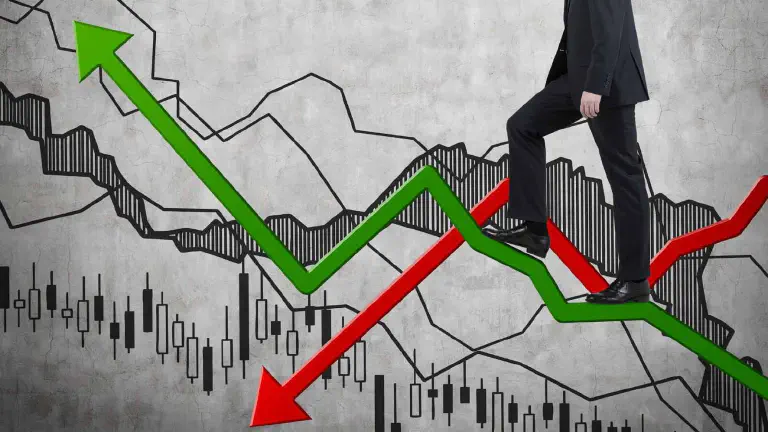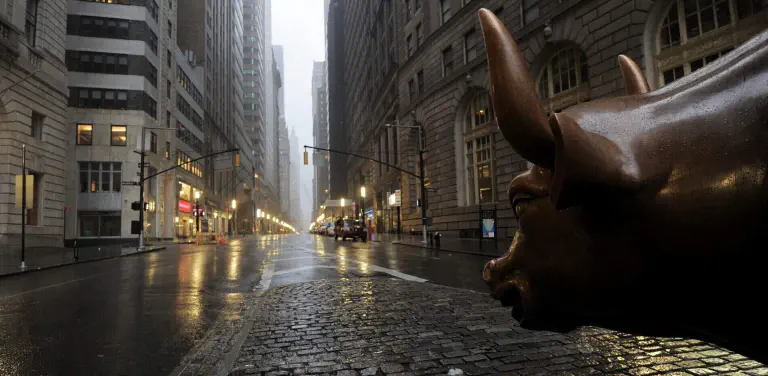
Natural sciences in usual circumstances are wonderfully predictable; what goes up must come down. Economists since Leon Walras have promoted the profitable illusion that economics is a natural science.
Today, more than anytime in history, that charade is obviously bunk.
US stocks have gone up but not down.
This has analysts, traders, economists, and pretty much everyone else asking the same questions. Why aren’t they coming down? When will they?
Should I buy US stocks?
The first question has the same answer it had three years ago.
The stock market isn’t coming down because the money supply is bigger than ever and in the hands of traders.
Keynes called it the liquidity trap. You can think of a kingdom with hoards of treasure in the royal treasury, but no money to pay the workers.
Today the US money supply is more a store of value than medium of exchange.
Asset prices are inflated. Big fed balances sheets went to Wall street. Corporate savings were hoarded, leveraged, and put into play. There are more ways now to bet your money than ever before: derivatives, on derivatives, on derivatives.
When a central bank is pegged to inflation, measured without equities in the basket, the liquidity trap is self-preserving.
Low inflation leads to low interest rates, low interest rates lead to easy money, easy money goes into the stock market where it attracts more money, velocity of transactions in the real economy stays low, leading too low inflation.
This virtuous cycle has gone on far longer than expected.
In 2017, the DOW saw 71 record closes, the S&P 500 went up nearly 20%, and the NASDAQ almost 30%.
This month the S&P 500 saw its 293rd day without a 3% pullback. US stocks are at all-time highs.
The problem is a highly leveraged inflated stock market should be sensitive to triggers, but triggers seemingly come and go without sell-offs.
For example, many predicted a hawkish Trump administration would trigger a sell-off.
The opposite happened: there were no rate hikes and stocks went up.
Now rates have gone up, but stocks still aren’t moving downward. This leads to the next question, when will stocks come down?
Stocks will come down when investors overweight stocks in their portfolios stand to lose unless they sell or stand to gain for diversifying into other investments.
Interest rates are up, raising the cost of leveraging long, and lowering the cost of going home.
But–and it’s a big but–there are huge amounts of money in bonds, and big balance sheets in more than a few central banks that have to unload them.
Bonds are attractive when interest rates are going down, and predictably, with nowhere for interest rates to go but up, face values on bonds are lower and lower.
The FT recently predicted long-term US bond yields will finish 2018 under 3%.
Those yields just spiked to 2.65%, and along with the under-performing US dollar, manufactured or not, that prediction looks shaky.
So higher interest rates slow the flow of capital into stock markets, but the shrinking weights of bonds in portfolios speed it up.
If the stock market is like a lake, interest rates make rain and bond sell-offs are like glaciers melting.
And that’s one of the keys to predicting the next market sell-off, glaciers don’t melt forever. The real economy is another key.
When employment is high and consumer spending is up, which is now happening in the US, earnings pick up.
The real economy, driven by exports and consumption, starts to move somewhat independently from financial markets.
High P/E ratios make real investments more attractive than speculative ones.
This means investors can pull money from publicly traded stocks outstanding and invest money in new issues from start-ups, well positioned non-traded companies, IPOs, and new debt with higher coupon rates.
These monies, along with deleveraged retained earnings, can find their way into plant, equipment, and intellectual property investment that promise high more stable returns.
These two forces, along with economic differentials between domestic and overseas markets, promise an end to the bull market in US stocks.
It could happen tomorrow, or, as some analysts predicted, it could happen in 2019, but a steep correction is more likely than not.
This leaves the last question, if they are likely to come down, why invest in US stocks at all? In economics, we call the answer a shock.
The US, and indeed the world, are in the middle of a massive technology shock.
This shift in technology has changed the productive potential of every organization in the world, and opened up vast new markets.
My argument above is a money supply argument, something you can visualize with an ISLM model.
The technology boom we are in could destroy that argument.
In other words, as unlikely as it sounds, productivity gains from new technologies, that are difficult if not impossible to measure in real time, could shift intrinsic values of all stocks upward.
More likely is that only some stocks will be more valuable tomorrow than today.
It follows that the secret to going long in today’s by historical standards inflated markets is to pick your stocks carefully.
Everything alternative energy and related for example has huge potential.
Ray Dalio has been talking up Facebook for sometime now.
It’s almost as though he’s bought into the future of online television, data, and virtual reality (though it’s more likely he bought into FB somewhere along the line).
Products supporting new new [ISRG] procedures are still incredibly attractive, especially in overseas markets.
Robotics and artificial intelligence could not be sexier places to put your money. The list goes on.
This highly inflated, over-valued, soon to dry up stock market is still an attractive place to invest, for the wise.













